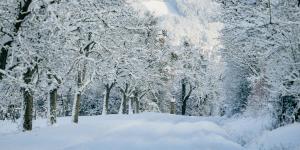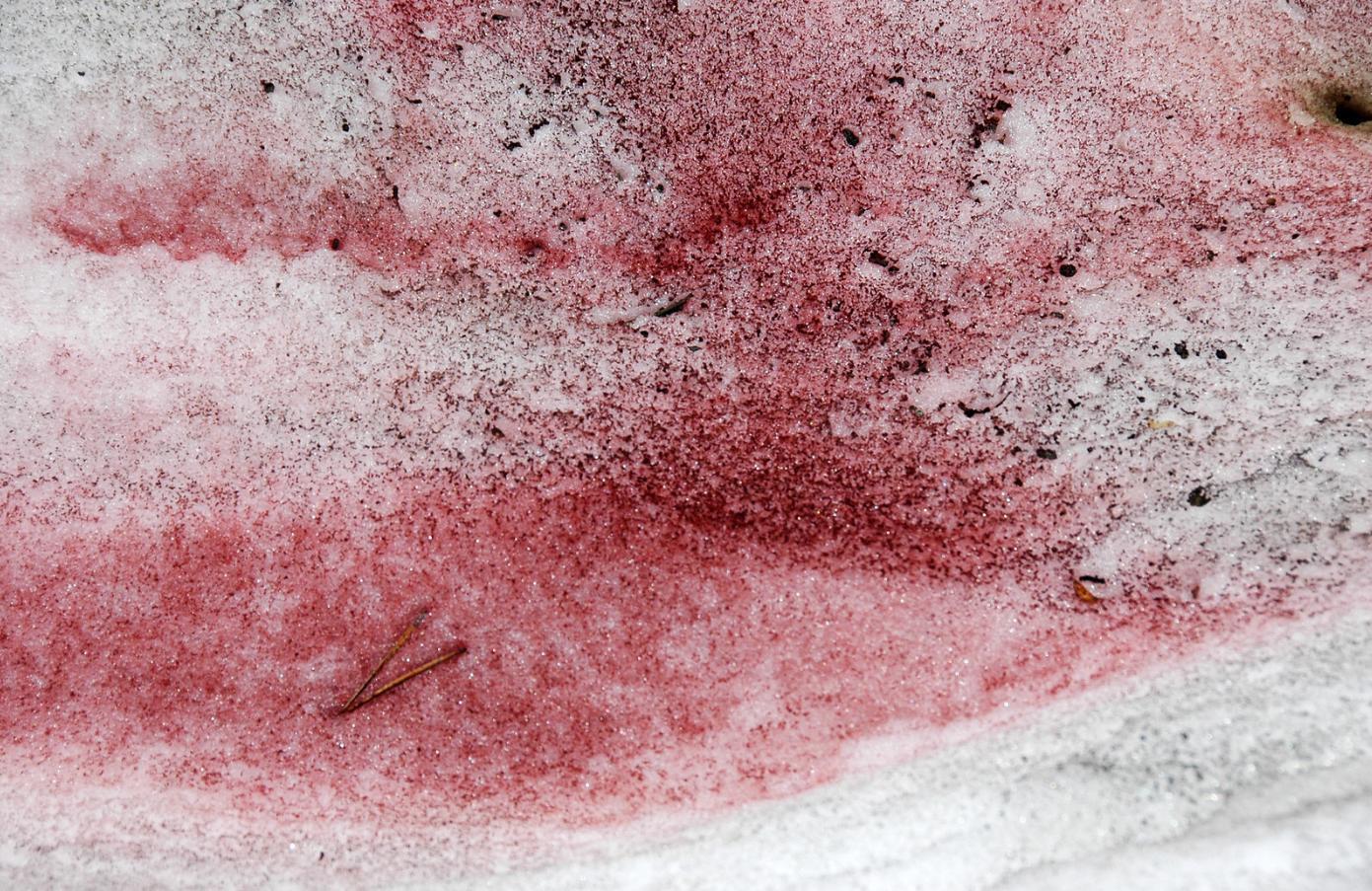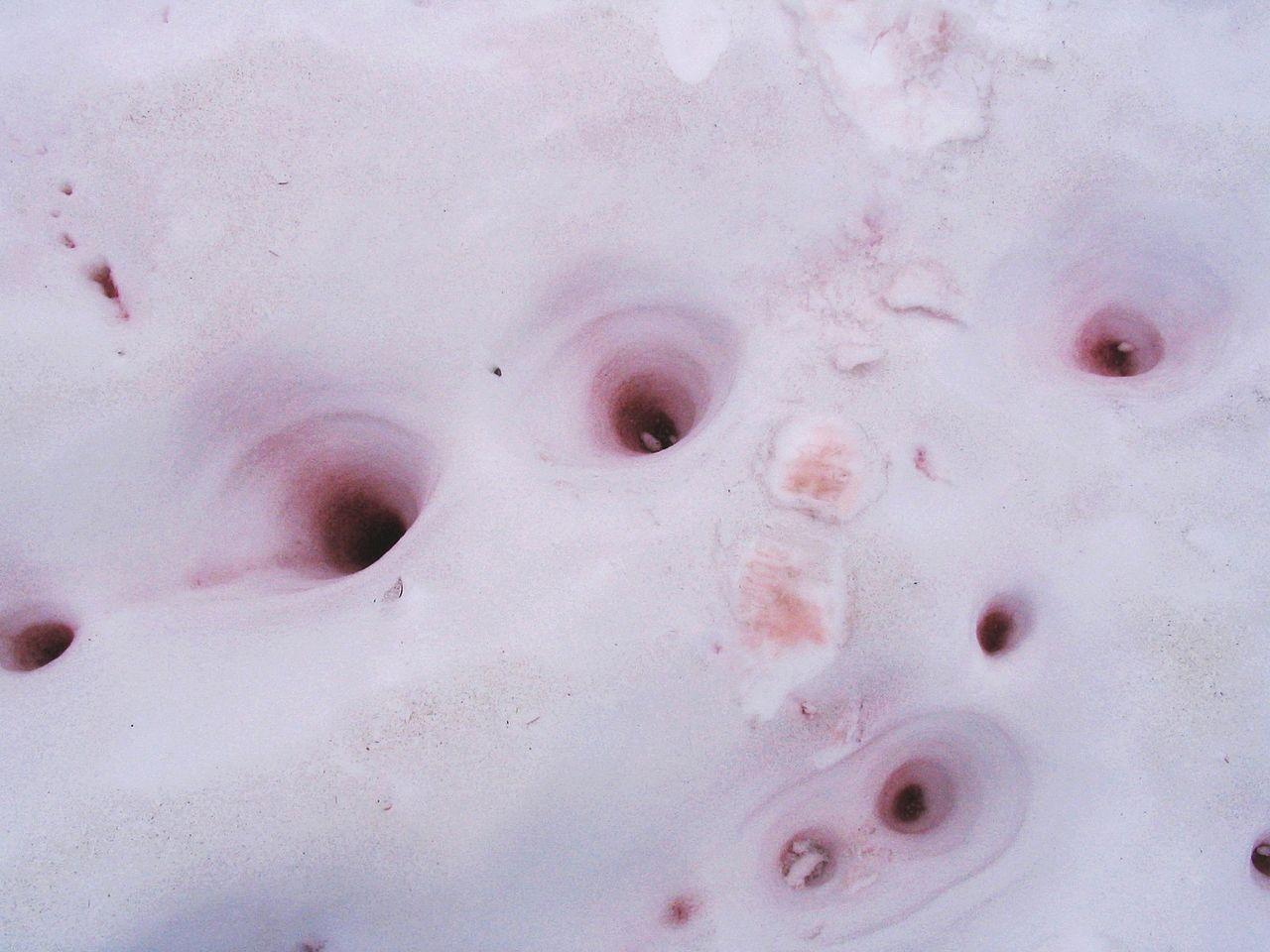What Is Pink Snow or Watermelon Snow?


Watermelon snow, also known as pink snow, is a fascinating natural phenomenon that occurs in certain high-altitude or polar regions. The unique hue of watermelon snow not only adds a touch of beauty to the snowy landscapes, but also serves as a reminder of the diverse and resilient life forms that can survive even in extreme conditions.
In this article by thedailyECO, we will explain what is pink or watermelon snow, explore its causes, characteristics, and the environments where it can be found.
What causes Watermelon snow?
Pink or watermelon snow, also known as snow algae or Chlamydomonas nivalis, is a natural phenomenon that occurs in certain snowy regions. It gets its name from the distinct pink or reddish coloration it imparts to the snow surface. This unique phenomenon is caused by the presence of pigmented microscopic algae that thrive in cold environments.
The pink coloration of the snow is a fascinating result of the pigments produced by the snow algae. These pigments play a crucial role in protecting the algae from the intense sunlight and UV radiation that are prevalent in high-altitude or polar environments, where the pink snow is commonly observed.
The primary pigments responsible for the pink color are carotenoids, a diverse group of organic pigments found in various organisms. Carotenoids, such as astaxanthin, present in the snow algae, possess unique light-absorbing properties. When sunlight hits the snow surface, these pigments efficiently absorb the energy from the incoming light, particularly in the blue and green regions of the spectrum.
As a consequence of absorbing specific wavelengths of light, the carotenoids undergo a process called selective light absorption. They absorb most of the blue and green light and reflect the longer red and pink wavelengths, giving the snow its characteristic hue.
While the presence of watermelon snow is fascinating to observe, it can also have ecological implications. The algae can alter the albedo, or reflectivity, of the snow surface, causing it to absorb more heat and potentially accelerate snowmelt. This can have consequences for the surrounding ecosystem, affecting the availability of water and influencing the habitats of other organisms.
be sure to read this other article, where we explain what is photosynthesis and how does it work.

Where do you find pink snow?
Watermelon snow can be found in various regions around the world. Some common locations where watermelon snow has been observed include:
High-altitude mountain ranges: watermelon snow is often found in mountainous areas with high elevations, such as the Alps, Himalayas, Rocky Mountains, Andes, and other similar regions. These areas provide the ideal conditions for the growth of snow algae.
Polar regions: watermelon snow is also observed in polar regions, including the Arctic and Antarctic. The cold temperatures and ample snowfall create a suitable environment for the proliferation of snow algae.
Northern latitudes: certain regions in northern latitudes, such as parts of Alaska, Canada, Scandinavia, and Siberia, are known to experience watermelon snow. The colder climate and presence of snow algae contribute to the occurrence of pink snow in these areas.
It's important to note that the presence of watermelon snow can vary from year to year and within different parts of these regions. Factors such as temperature, snowfall patterns, and the abundance of snow algae can influence the occurrence and intensity of watermelon snow in specific locations.
When can you find watermelon snow?
Watermelon snow is typically found during the spring and summer seasons in regions where it occurs. The exact timing may vary depending on the specific location and climatic conditions.
Watermelon snow usually becomes more visible and widespread during the melting of winter snow, which typically occurs in the transition from late spring to early summer.
As the snow melts, it creates a moist environment that promotes the growth and activation of snow algae, including the species Chlamydomonas nivalis responsible for watermelon snow.
In high-altitude mountain regions, watermelon snow may persist throughout the summer months as long as the environmental conditions remain favorable. In polar regions, where the snow cover is more consistent, watermelon snow can be observed during the warmer months when there is sufficient sunlight for the algae to thrive.
Do not miss this other article, where we explain what is the red tide and what causes it.

Is pink snow dangerous?
Pink snow, also known as watermelon snow, is not inherently dangerous to humans or animals. While the appearance of pink snow can be intriguing and visually striking, it does not pose significant risks to human health.
However, it's important to note that the coloration of the snow is an indication of the presence of certain environmental conditions. Pink snow tends to occur in high-altitude or polar regions, where snow algae thrive. The presence of snow algae may suggest specific environmental factors, such as nutrient levels and sunlight exposure, that can contribute to the growth of these organisms.
While consuming pink snow is generally considered safe in small amounts, it's advisable to avoid eating large quantities of it. It's always a good practice to avoid eating any snow or ice that may be contaminated by pollutants or other harmful substances.
Is pink snow dangerous for the environment?
Snow algae are adapted to survive in cold environments and are a part of the natural ecosystem in high-altitude or polar regions.
While the pink coloration of the snow may alter the visual appearance of the landscape, it does not cause any major ecological harm. In fact, snow algae play a role in nutrient cycling and contribute to the overall biodiversity of these regions. For example, the excessive presence of snow algae could potentially affect the water supply in certain areas during the melting process.
However, it's important to maintain a balance in the ecosystem and avoid excessive disturbance. Excessive trampling or disruption of the snow-covered areas where pink snow occurs can disturb the delicate balance of the ecosystem and potentially impact the growth and distribution of snow algae.
If you're interested in exploring fascinating natural phenomena, don't miss our article on hair ice.
If you want to read similar articles to What Is Pink Snow or Watermelon Snow?, we recommend you visit our Facts about nature category.
- Vinas, JM (2022). Knowing Meteorology: Illustrated Dictionary of Weather and Climate . Spain: Editorial Alliance.
- Rodriguez, Francis. January 16, 2021. Phytopasion. Available at: https://fitopasion.com/tag/chlamydomonas-nivalis







